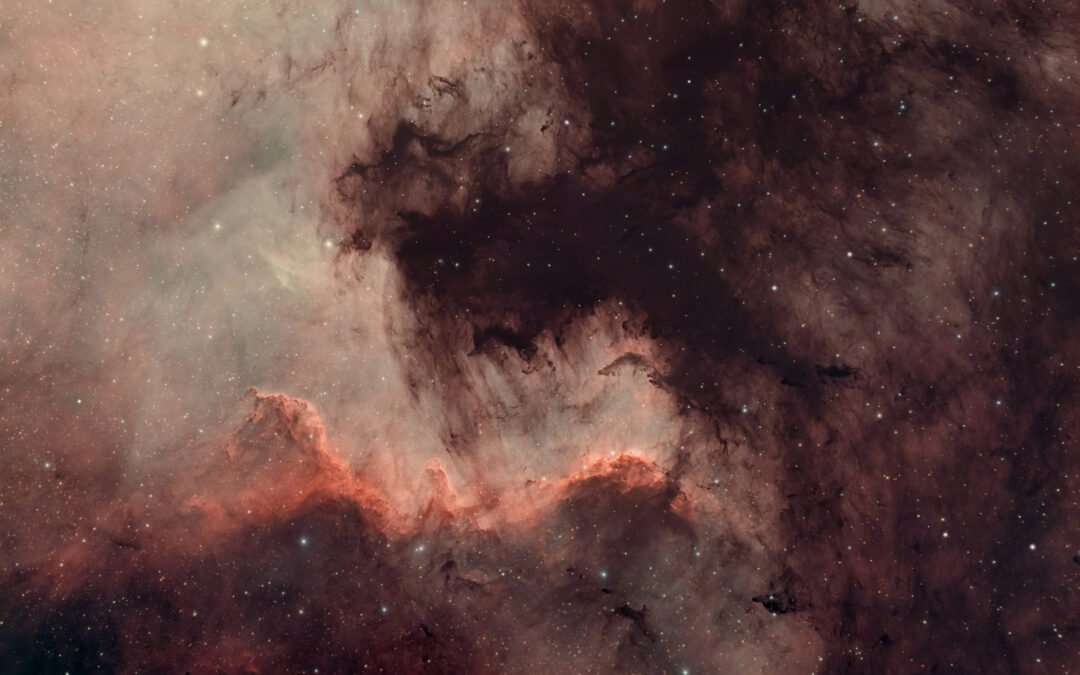In late summer of 2023, over the span of a week, I dedicated my time to capture the Cygnus Wall, a prominent feature within the North America Nebula (NGC 7000). This nebula, located in the constellation Cygnus, lies about 2,590 light-years away from Earth.
Dates Captured:
August 31 – September 6, 2023
Gear I Used to Capture This Image:
- Telescope: SVBony SV550 122mm Triplet APO
- Reducer: SV209 0.8x focal reducer
- Camera: ZWO ASI2600MC Pro
- Mount: Sky-Watcher EQ6-R Pro
- Filter: SVBony SV220 7nm 2″
- Guide Scope: Orion 50mm Mini Guide Scope
- Guide Camera: SVBony SV305
Imaging Details:
Acquisition details: 205 x 300″ (17 hours 5 minutes of total exposure time)
A total of 205 frames, each with an exposure time of 300 seconds, were stacked and processed using PixInsight and Adobe Photoshop to create the final image. The use of the SVBony SV220 dual narrowband filter helped to isolate the H-alpha and OIII emissions, which highlighted nebula details in the image.
About the Cygnus Wall
The Cygnus Wall is a striking emission region within the larger North America Nebula (NGC 7000). This structure resembles the continent of North America, with the Cygnus Wall forming the “Mexico and Central America” portion. This region is particularly interesting due to its complex formations of interstellar gas and dust, which are actively forming new stars.
The Cygnus Wall itself is a vivid showcase of stellar nurseries, where the intense radiation from young, hot stars ionizes the surrounding hydrogen gas, causing it to glow. The dark regions are dense clouds of dust that block the light from behind. Those dark structures are future places where new stars born.
The North America Nebula (NGC 7000)
NGC 7000 is a bigger structure that is an emission nebula, spanning about 100 light-years across. It is part of a larger complex that includes the Pelican Nebula (IC 5070), located just to the east. This nebula complex is one of the most popular targets for astrophotographers due to its distinctive shape and rich structure.
The nebula’s bright regions are caused by ionized hydrogen gas, which emits red light (H-alpha emission), and other elements like oxygen and sulfur that add to its colorful palette. The interplay between the light and dark regions gives NGC 7000 its stunning, three-dimensional appearance.
The high-resolution version of this image is available on my AstroBin page. Just click on the image below:


